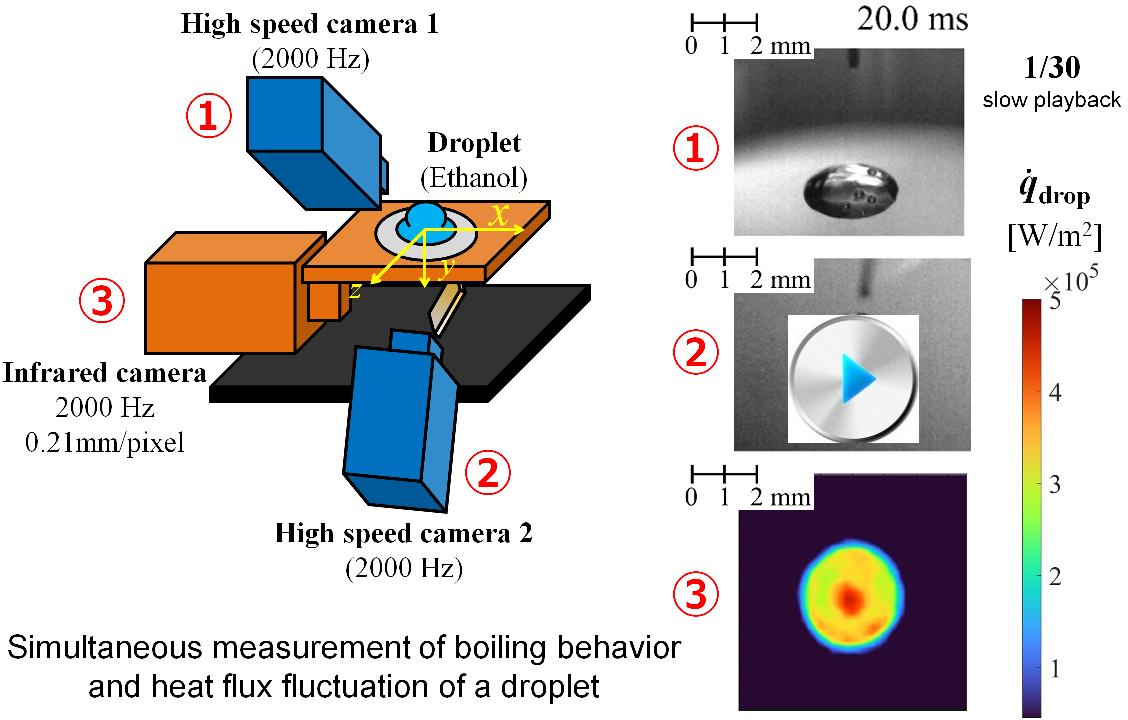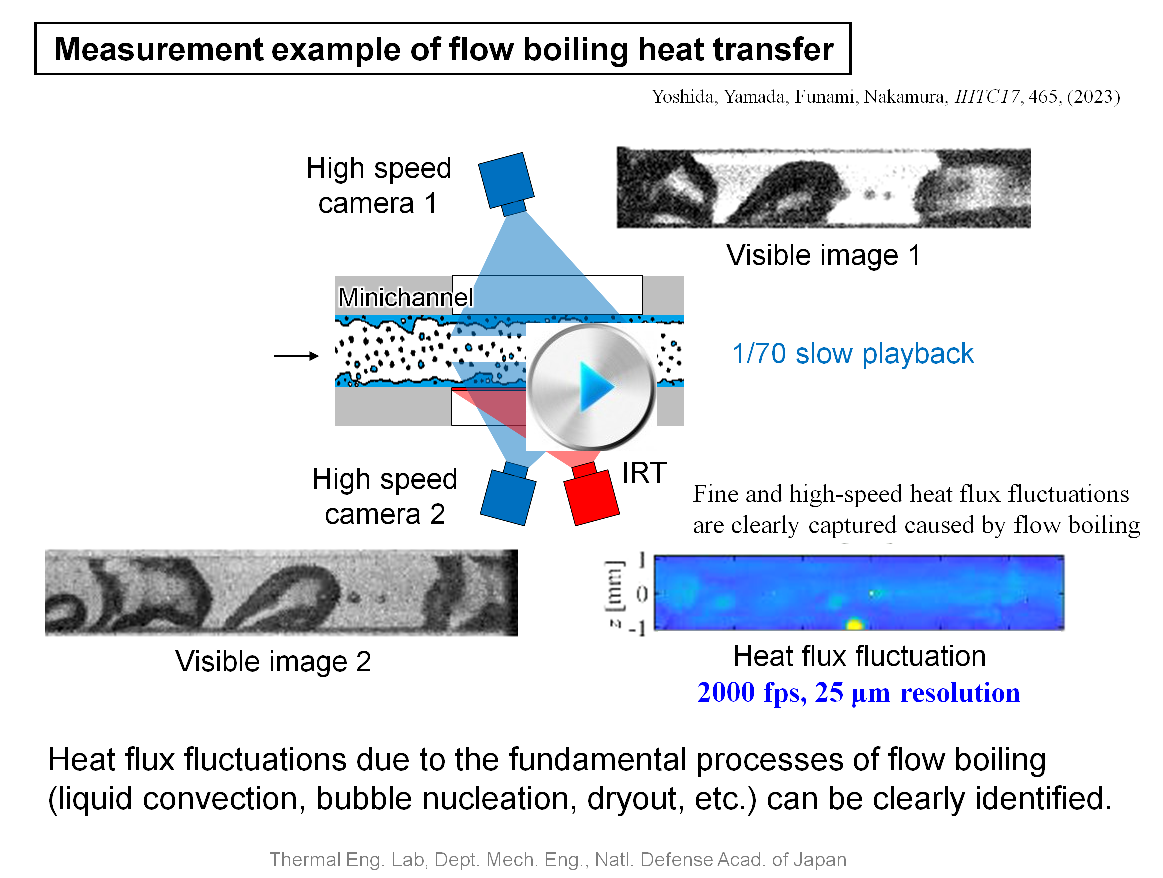Boiling Heat Transfer Measurements Using Infrared Thermography
1. Principle
When measuring boiling heat transfer with infrared thermography, a heat transfer surface is generally used in which a conductive thin film (metal, ITO, etc.) is deposited on an infrared-transmitting window material (sapphire, silicon, etc.). In this study, calcium fluoride, which has extremely high infrared transmittance and also transmits visible light, was used as the window material. In addition, ITO, which transmits visible light but not infrared, was used as the conductive thin film. By using this heat transfer surface, it is possible to observe the behavior of gas-liquid interface through the heat transfer surface with a high-speed camera, and at the same time, to measure temperature fluctuations on the heat transfer surface using high-speed infrared thermography.
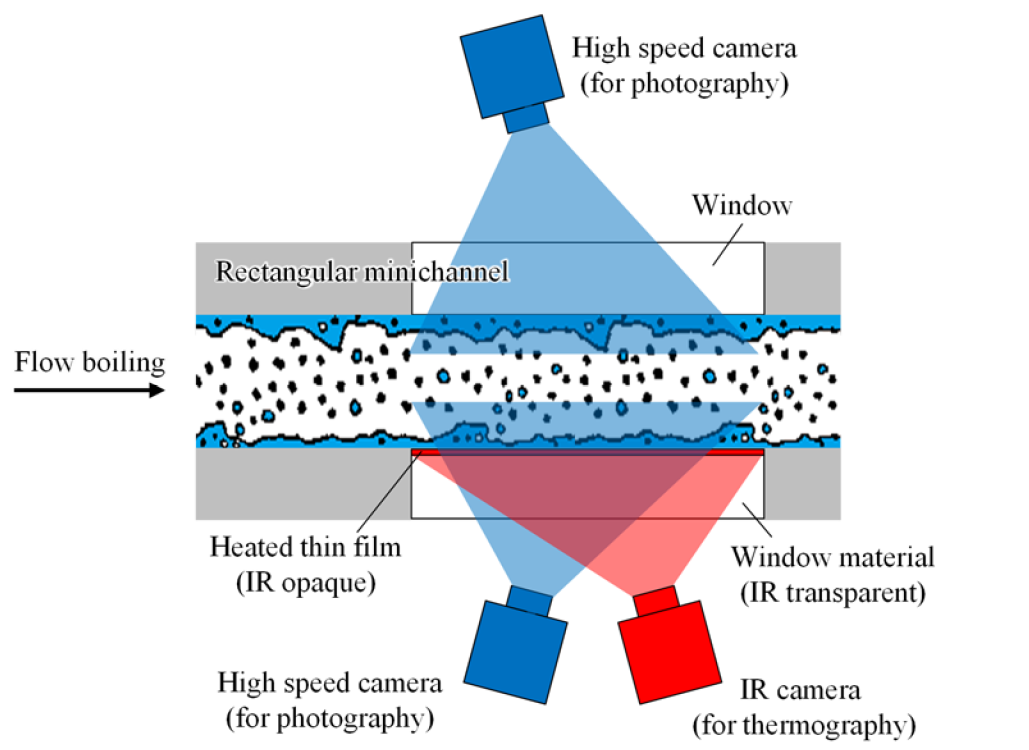
2. Frequency response and space resolution
Temperature fluctuations on a heat transfer surface are attenuated by thermal inertia and thermal diffusion. Therefore, measurement techniques that evaluate heat transfer fluctuations from temperature fluctuations, such as infrared cameras, unable to measure heat transfer fluctuations if the temperature fluctuations are significantly attenuated and cannot be distinguished from noise. Here, we formulated the limits of detectable time and space resolutions for a heat transfer surface consisting of a thin film and a window material as a function of the heat flux fluctuation amplitude, the thermophysical properties of the thin film and window material, the thickness of the thin film, and the measurement temperature resolution.
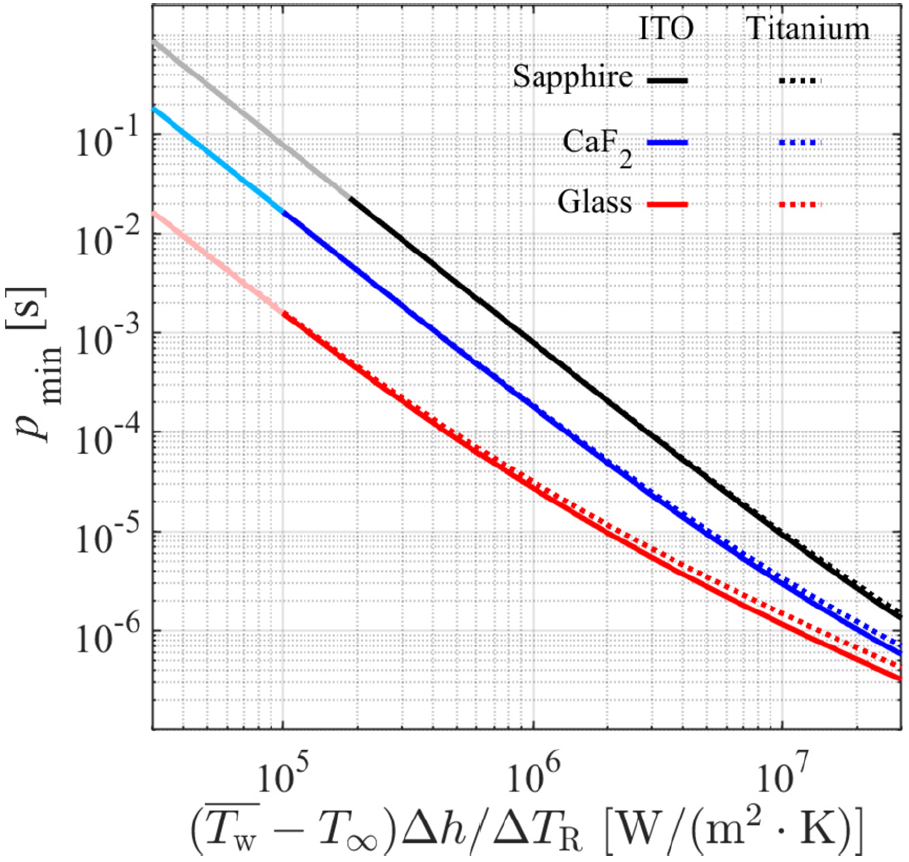
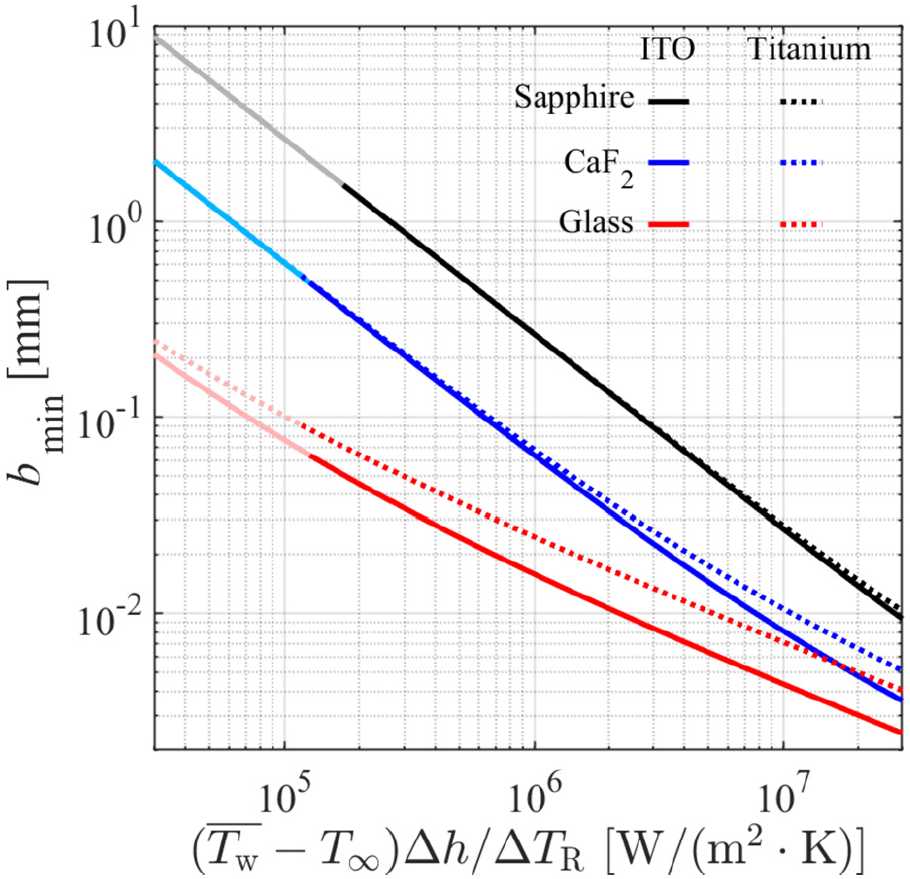
[main literature]
3. Measurement of droplet boiling
To verify whether it is possible to simultaneously measure the behavior of the gas-liquid interface and heat transfer fluctuation of the wall through a heat transfer surface, a droplet of ethanol was dropped onto a heated visible transparent heater (a calcium fluoride window material deposited with ITO), and the boiling behavior of the droplet was photographed through the window material with a high-speed camera, while the temperature fluctuation of the heat transfer surface was measured through the window material with a high-speed infrared camera. As a result, it was demonstrated that it is possible to measure fine and fast heat transfer fluctuations corresponding to the process from the generation to the collapse of boiling bubbles.
[main literature]
4. Measurement of flow boiling in a minichannel
Flow boiling heat transfer in a horizontal square minichannel with a side length of 2 mm was investigated using infrared thermography with a high spatiotemporal resolution (4000 fps, 0.025 mm/pixel). Simultaneously, two high-speed cameras were used to visualize the behavior of the gas-liquid interface. In addition, the contribution of fundamental processes of flow boiling (liquid convection, microlayer evaporation, dryout, three-phase contact line, and rewetting) to the heat transfer was investigated by image analysis of the instantaneous heat transfer coefficient distribution. As a result, it was revealed that the contribution of the liquid convection was dominant under the experimental conditions, accounting for approximately 85-95% of the total heat transfer. Here, liquid convection includes the effects of turbulence in the liquid phase caused by boiling nucleation and acceleration associated with the two-phase gas-liquid flow. It was also found that dryout occurred even under low vapor quality, and that when the dryout was partial, the decrease in heat transfer was limited by the contribution of the three-phase contact line formed at the outer edge of the dryout.
